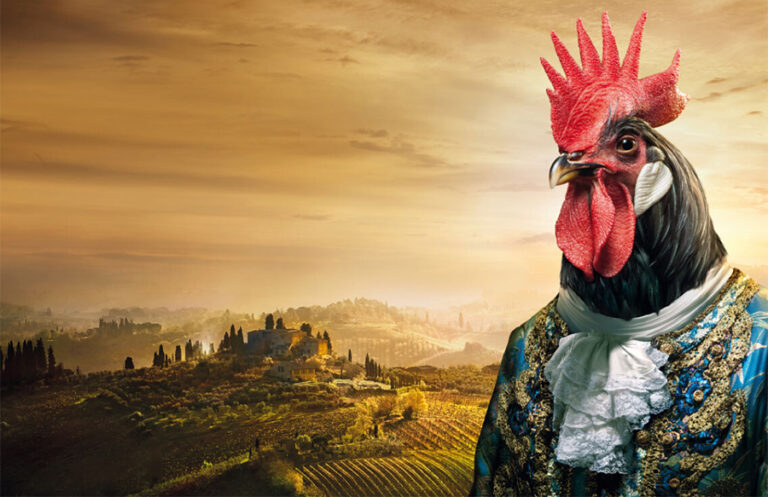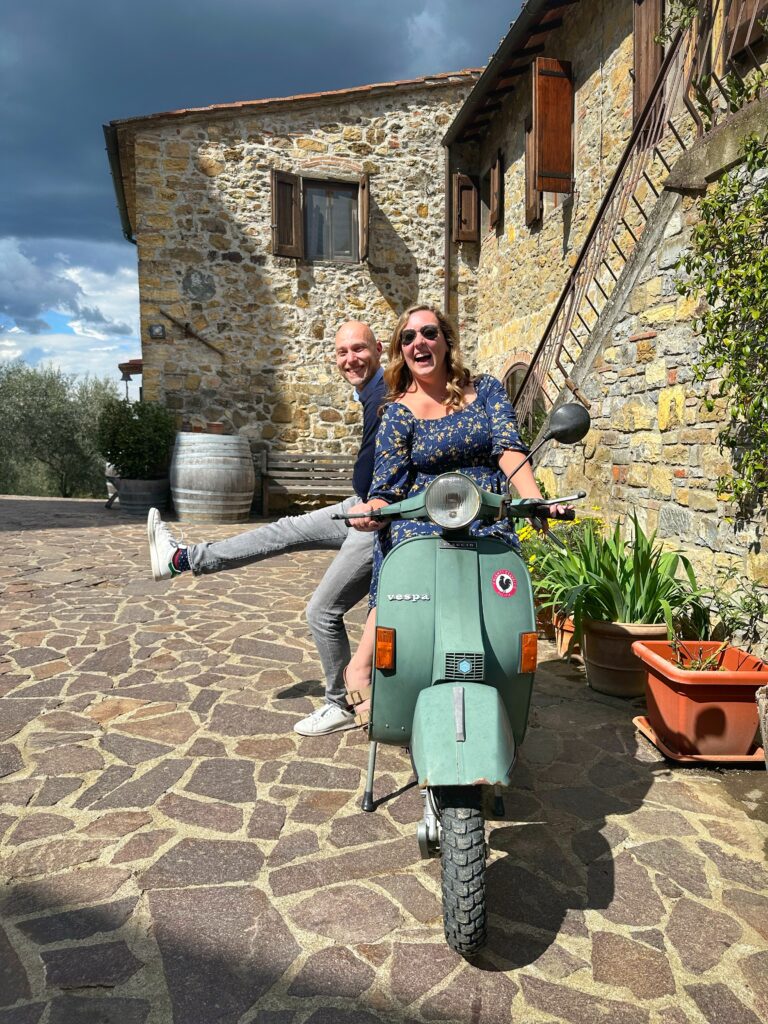When talking about great Tuscan wines, most people immediately think of Chianti Classico or Brunello di Montalcino. However, there is a small denomination—one of the smallest in Italy—that preserves a centuries-old tradition and truly deserves to be rediscovered: Carmignano. Nestled in the hills overlooking the city of Prato, this area boasts one of Italy’s smallest DOCG appellations and a winemaking history that dates back long before the Roman era. Here, wine is not just a product; it is a true symbol of cultural identity, passed down from generation to generation. That’s why we at Wine School Italia, through Tuscany Uncorked Wine Tours, have chosen to showcase this hidden gem with one of our most beautiful and exclusive wine tours—and now, through this article on our blog.
A Journey Through Time: From the Etruscans to the Medici
The hills of Carmignano were already cultivated with vineyards during Etruscan times, as evidenced by archaeological findings in the nearby village of Artimino. Pottery and wine-drinking tools have been discovered in tombs dating back to the 7th century BC, indicating that wine was not merely a beverage but an integral part of ceremonies and social life for this ancient civilization.
Later, the Romans also recognized the value of this land. It is said that Julius Caesar himself granted the hillside territories between the Arno and Ombrone rivers to his veterans, captivated by the fertility of the soil and the potential for cultivating high-quality vineyards.
The first official document mentioning Carmignano wine dates back to the time of Charlemagne. It is an 804 AD contract concerning the granting of certain lands by the Church of San Pietro a Seano, which references vineyards, olive groves, and woodlands. While the quality of the wine from that era remains a mystery, one detail suggests it was already highly valued: in the 14th century, the merchant Francesco Datini from Prato was willing to pay four times the average price of wine at the time. An unmistakable sign of its worth.
During the Renaissance, Carmignano wine also won over the Florentine courts. Lorenzo the Magnificent, the famous poet and statesman, was a great admirer of it. It is said that during one of his renowned feasts, he described Carmignano as a “divine nectar,” a praise that further cemented its reputation among the Tuscan aristocracy.
Carmignano and the Medici: A Legacy of Winemaking Excellence
The connection between Carmignano and the Medici family is deep and long-lasting. In 1716, Cosimo III de’ Medici issued an edict officially designating four areas for high-quality wine production: Chianti, Pomino, Val d’Arno di Sopra, and, of course, Carmignano. This decision effectively marked the first official wine appellation in history, predating the French AOC system by more than a century.
During the Carmignano Hidden Treasure Tour by Tuscany Uncorked, guests will have the chance to see a copy of Cosimo III’s historic edict.
Not only that—legend has it that when Catherine de’ Medici became Queen of France in 1533, she brought with her some Cabernet Sauvignon vine cuttings, which were later planted in the lands of Carmignano. As evidence of this, old local winemakers used to refer to Cabernet as uva francesca (“French grape”).
This would explain the historic presence of Cabernet in the Carmignano blend, long before the *Super Tuscan* movement made this combination famous. Hearing the firsthand accounts of Carmignano’s winemakers during the tour will be both fascinating and insightful, as they often share different versions of this intriguing story.
The connections with the Medici family don’t end there. In the 16th century, they established their private hunting reserve right here: the Barco Reale di Carmignano. This vast area was enclosed by a 50-kilometer-long wall, remnants of which can still be seen today.
The wine produced within this area is still called Barco Reale di Carmignano, a recognized denomination that identifies young, fresh wines.

The Legacy of Carmignano Lives On
At the end of the 18th century, Carmignano wine was exported to London on behalf of the renowned physician and philosopher Filippo Mazzei. He later moved to the United States, where he fought alongside the Americans for independence from the United Kingdom.
After settling in Virginia, Mazzei transplanted several Tuscan grape varieties and introduced dried figs—now a Slow Food Presidium—for which Carmignano was famous. In Virginia, he became an agricultural advisor and close friend of Thomas Jefferson, who so appreciated Carmignano wines that he kept several bottles in his personal cellar.
I highly recommend trying Vin Santo di Carmignano paired with dried figs—it’s a perfect match!
Among the many poets and writers who praised the excellence of Carmignano wine during this period, one name stands out: Gabriele D’Annunzio. He was well acquainted with the area, having lived in Prato during his high school years, and he mentioned Carmignano wine multiple times in his works, particularly in Le faville del maglio.
By the late 19th and early 20th centuries, the winery of Marchese Niccolini was producing and exporting Carmignano wine to Switzerland, Austria-Hungary, and Germany. Exports grew even further after gaining access to the English and American markets, eventually accounting for two-thirds of total production.
The Decline and Revival of a Unique Wine
Despite its illustrious history, Carmignano faced challenging times. In 1932, it suffered a major setback when it was incorporated into the Chianti denomination, losing its historical identity for decades. This led to a decline in production and a loss of prestige, as Carmignano wines were sold simply as Chianti, without proper distinction.
But in the 1960s, a few dedicated producers decided to revive tradition by restoring Carmignano to its original blend. In 1975, it finally regained official recognition with DOC status, and in 1990, it was elevated to DOCG. Thanks to the passion and determination of local winemakers, Carmignano is once again recognized as a gem of the Italian wine scene.
Today, Carmignano stands as one of the most fascinating expressions of Tuscan wine. The production regulations (disciplinare) require a blend with at least 50% Sangiovese, up to 20% Canaiolo Nero, and between 10% and 20% Cabernet Sauvignon and Cabernet Franc. White grape varieties such as Trebbiano and Malvasia are allowed up to 10%, though they are rarely used. Gabriele, your sommelier and guide at Tuscany Uncorked, will tell you all about the unique characteristics of these grape varieties in detail.
It’s not just the taste that makes Carmignano special, but also its remarkable aging potential. Traditional winemaking methods involved long maturation periods, often in chestnut wood barrels—an unusual practice in modern winemaking—which imparted spicy and complex aromas to the wine.
The production area stretches across hills ranging from 50 to 200 meters above sea level, with mineral-rich soils that contribute to the wine’s depth and structure. Thanks to a favorable microclimate and a winemaking approach that balances modern techniques with respect for tradition, Carmignano stands out for its longevity and aromatic complexity.

A Wine for Every Occasion
Carmignano is a wine that pairs beautifully with Tuscan cuisine. Its spicy notes and elegant tannins make it an excellent match for red meat dishes, game, and aged cheeses. However, don’t overlook its potential with well-structured vegan dishes, such as a richly seasoned ribollita: its freshness and minerality will enhance every bite.
A Small but Great Treasure to Discover
I have told you the story of a wine rooted in excellence, passion, and tradition—a small yet great treasure that has endured through the centuries while preserving its unique identity. If you haven’t tasted it yet, now is the time: in your glass, you’ll find not just an extraordinary wine but a piece of Tuscan history that deserves to be celebrated.
Come discover it with Tuscany Uncorked Wine Tours by Wine School Italia. It will be a slow-paced journey, far from mass tourism, offering an experience that will truly move and inspire you.
Stay in Touch
📲 Follow us on Instagram and Facebook for more wine adventures, travel tips, and exclusive experiences!
See you in Tuscany! 🍷



